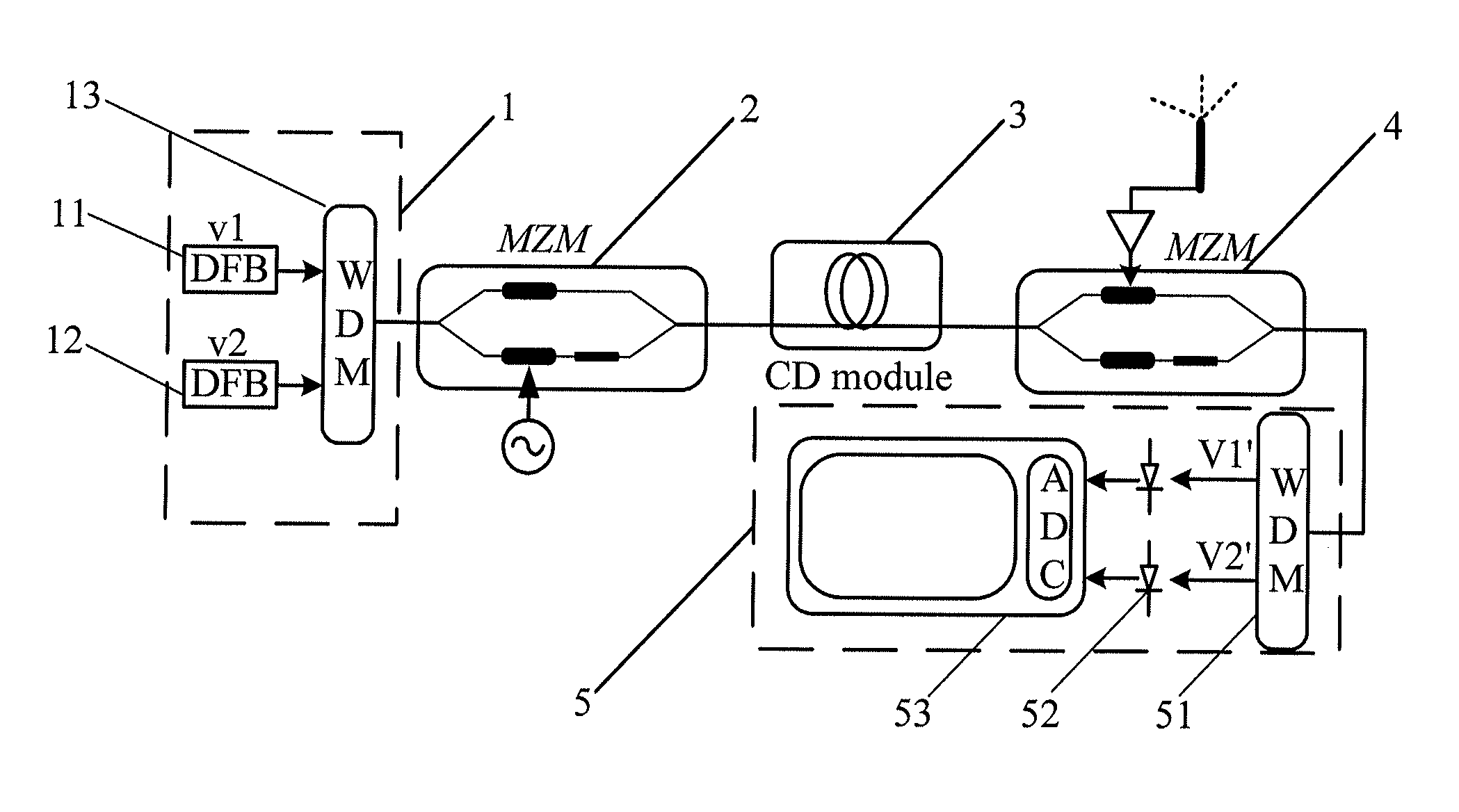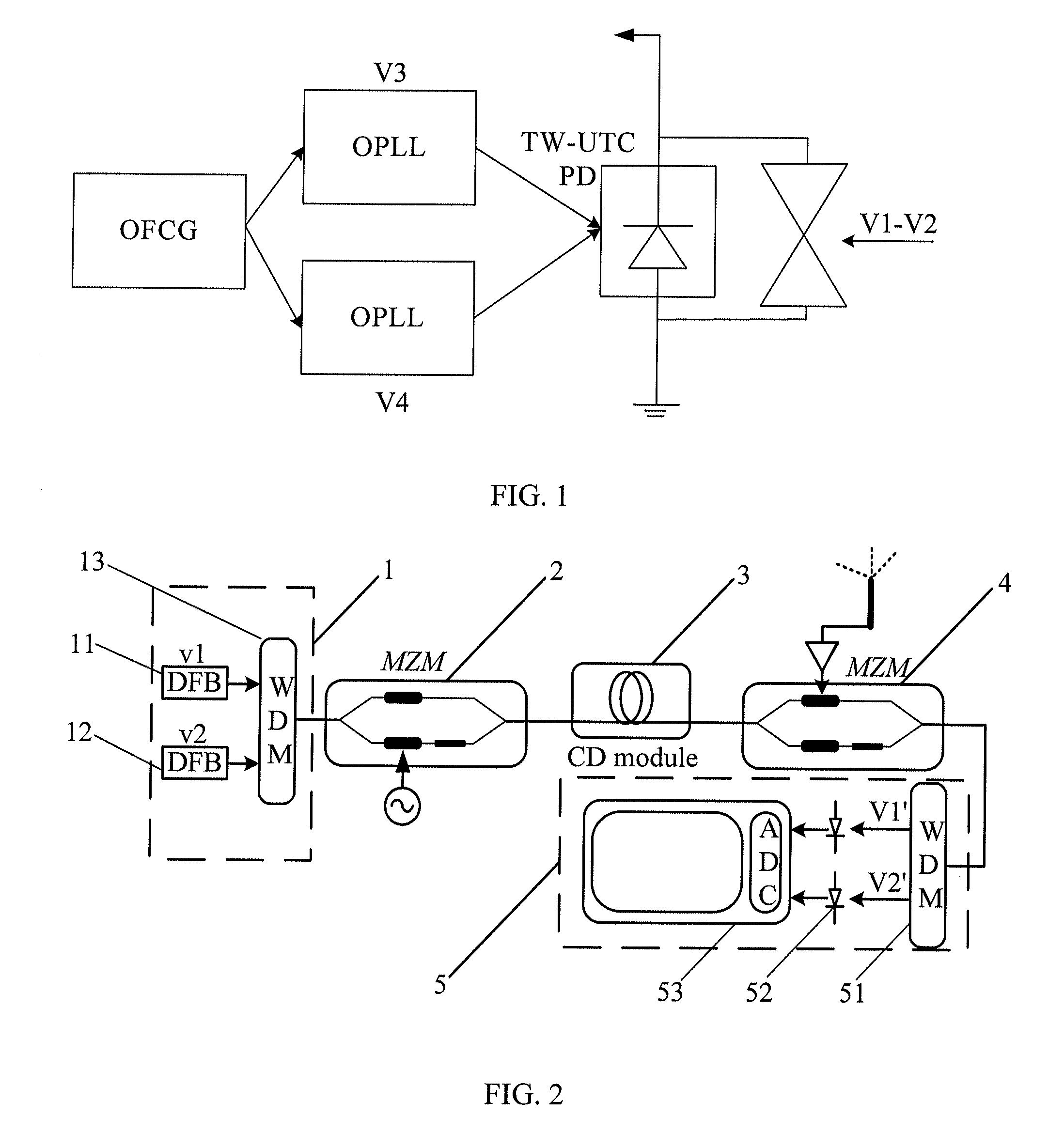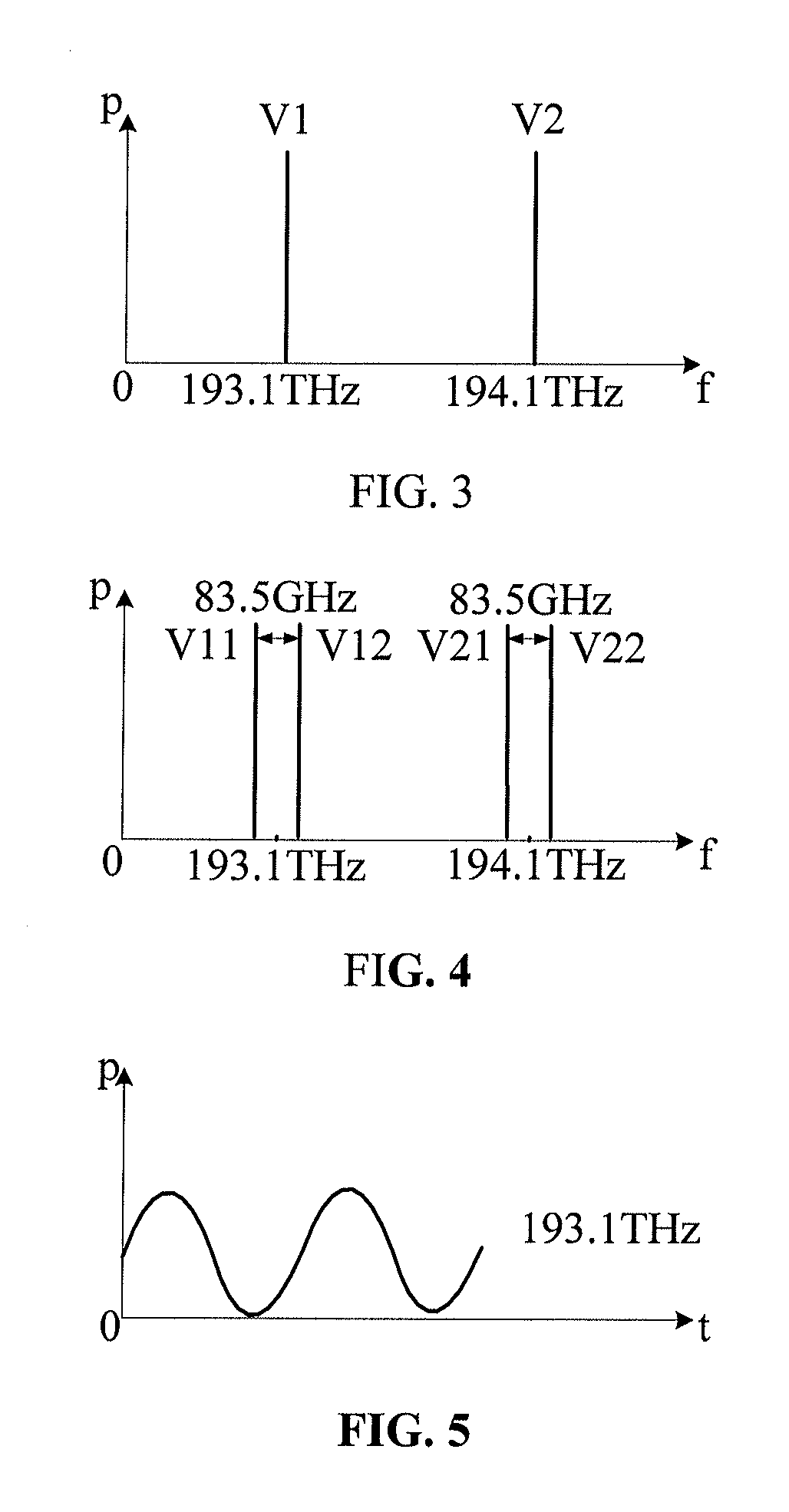Signal receiving method based on microwave photonics technologies
a signal receiving and microwave photonic technology, applied in the field of communication, can solve the problems of affecting the accuracy of the whole system, inflexible, less accurate, high market price of opll, ofcg and tw-utc pd, etc., and achieve the effect of widening the application range and simplifying the structure of the signal receiving devi
- Summary
- Abstract
- Description
- Claims
- Application Information
AI Technical Summary
Benefits of technology
Problems solved by technology
Method used
Image
Examples
embodiment 1
[0037]This embodiment provides a signal receiving device based on microwave photonics technologies. As shown in FIG. 2, the device includes:[0038]a signal generation module 1, a first Mach-Zehnder modulator 2, a dispersion module 3, a second Mach-Zehnder modulator 4, and a signal conversion module 5.
[0039]The working principle of the Mach-Zehnder modulator (Mach-Zehnder Modulator, abbreviated as MZM) is to split input light into two equivalent signals, which respectively enter two optical branches of the modulator. The two optical branches are made from an electrical-to-optical material whose refractive index varies with the level of an external electrical signal applied. As the variation of the refractive index of the optical branches can cause the change of the phase of a signal, when the signals in the two branches are combined again at an output end of the modulator, the combined optical signal is an interference signal with changed intensity, thereby achieving the modulation of...
embodiment 2
[0045]This embodiment provides a signal receiving method based on microwave photonics technologies. As shown in FIG. 8, the method includes:
[0046]Step 201: Generate a beam of signals including two optical signals with different wavelengths.
[0047]For example, the beam of signals including the two optical signals with different wavelengths may be generated by a signal generation module. Furthermore, the signal generation module includes two lasers and one wavelength division multiplexer, the two lasers are configured to obtain the two optical signals with different wavelengths, and the wavelength division multiplexer is configured to combine the two optical signals with different wavelengths into the beam of optical signals.
[0048]Step 202: Modulate the signals including the two optical signals with different wavelengths into a first signal, in which the first signal includes two signals each carrying a receiving microwave carrier frequency.
[0049]For examples, in this embodiment, a fir...
embodiment 3
[0061]This embodiment provides a signal receiving device based on microwave photonics technologies. As shown in FIG. 2, the device includes:[0062]a signal generation module 1, a first Mach-Zehnder modulator 2, a dispersion module 3, a second Mach-Zehnder modulator 4, and a signal conversion module 5.
[0063]In this embodiment, the signal generation module 1 includes a first laser 11, a second laser 12, and a first wavelength division multiplexer 13. As shown in FIG. 3, the first laser 11 and the second laser 12 are configured to obtain two optical signals with different wavelengths, in which frequencies of the two optical signals are V1 and V2 respectively, and the frequency V1 is 193.1 THz and the frequency V2 is 194.1 THz. The first wavelength division multiplexer 13 is configured to combine the two optical signals with different wavelengths into a beam of optical signal, where the frequencies of the two optical signals are V1 and V2, respectively. The signal generation module 1 is ...
PUM
 Login to View More
Login to View More Abstract
Description
Claims
Application Information
 Login to View More
Login to View More - R&D
- Intellectual Property
- Life Sciences
- Materials
- Tech Scout
- Unparalleled Data Quality
- Higher Quality Content
- 60% Fewer Hallucinations
Browse by: Latest US Patents, China's latest patents, Technical Efficacy Thesaurus, Application Domain, Technology Topic, Popular Technical Reports.
© 2025 PatSnap. All rights reserved.Legal|Privacy policy|Modern Slavery Act Transparency Statement|Sitemap|About US| Contact US: help@patsnap.com



